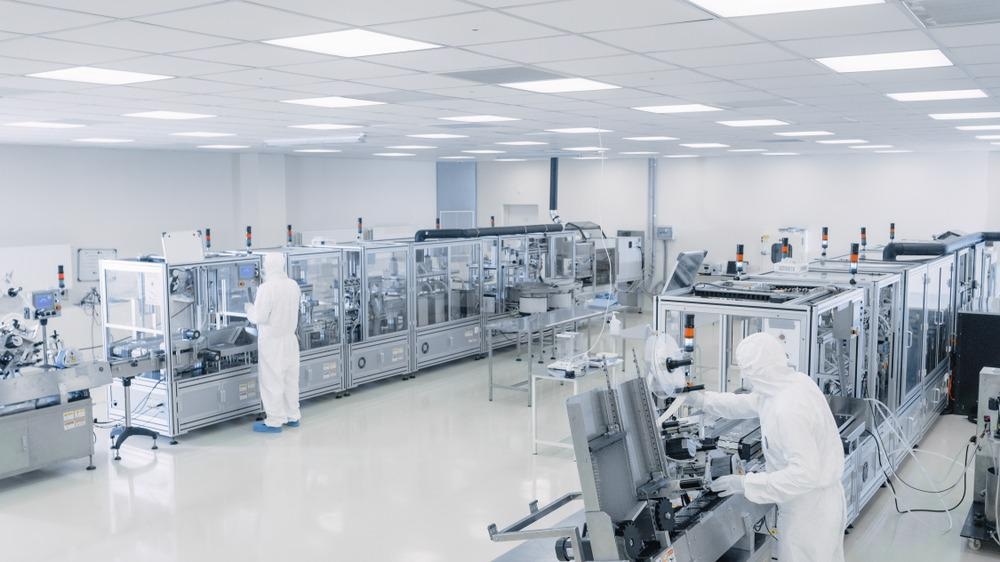This article presents an overview and analysis of the field of biotechnology, its applications in the chemical industry, the latest advances, as well as its sustainability and limitations.

Image Credit: Gorodenkoff/Shutterstock.com
What is Biotechnology?
The application of life sciences to chemical synthesis is referred to as biotechnology. Over the last few decades, there has been a critical convergence of forces that help more biorenewables reach the market. People around the world continue to seek more biobased products. For all stakeholders in the biomaterials business, this convergence of commercially feasible renewable feedstocks and consumer demand represents an incredibly exciting opportunity.
The technology for bringing industrial biotechnology goods to market has evolved considerably over the last two decades. Chemical catalysts with higher performance in biomass processes are being developed using novel materials. These methods of conversion have the potential to be both environmentally and economically beneficial.
The large range of chemical products that may theoretically be manufactured is the strength of industrial biotechnology. However, because the chemical industry was built primarily on hydrocarbon feedstocks, commercial goods are well known and their production technology is well-developed.
Biotechnology in the Chemical Industry
Biotechnology is of growing importance in the direct manufacture of specialty compounds such as citric acid, lactic acid, propane-1,3-diol, and certain amino acids by fermentation.
In the United Kingdom, the biotechnology sector has a vast history. Clostridium acetobutylicum was fed mashed potato and corn (both containing starch) in 1916 during the First World War to produce a combination of propanone (acetone), butanol, and ethanol (known as the ABE process).
Propanone was needed to make cordite, which was used in munitions. ABE was once the second-largest industrial fermentation process, trailing only behind ethanol production. The advent of the petrochemical industry in the 1950s, on the other hand, supplied considerably cheaper feedstocks for chemical production, causing the ABE business to fall globally.
Petrochemicals are a limited resource that will become more expensive as oil becomes scarcer, and their use is linked to the emission of greenhouse gases that contribute to global warming. Biotechnology-based chemical production could lessen our reliance on natural gas and oil as well as the chemical industry's environmental impact.
Because chemical synthesis approaches are complex and expensive, some compounds such as 2-hydroxypropane-1,2,3-tricarboxylic acid (citric acid) have been routinely synthesized on a million-tonne scale utilizing biotechnology for many years.
Latest Advances
The chemical industry has contributed to modern society by offering cost-effective items for our everyday needs. However, it is currently confronted with a significant problem in terms of pollution and greenhouse gas emissions. Industrial biotechnology has become more efficient for the manufacture of chemicals and materials as molecular biology, biochemistry, and synthetic biology have advanced.
It must be developed further into "next-generation industrial biotechnology" (NGIB), which is low-cost mixed substrates based on less fresh-water consumption, energy conservation, and long-term open continuous intelligent processing, overcoming the shortcomings of CIB and transforming CIB into competitive processes.
Contamination-resistant microorganisms are essential for successful NGIB, which necessitates resistance to microbial or phage contamination as well as the use of readily available metabolic or synthetic biology engineering tools and procedures.
Claim your FREE Visitor Badge for ChemUK 2022
Sustainability and Limitations
The Life Cycle Analysis (LCA) method has long been used to assess the long-term viability of biofuels and bioproducts. Bioproduct LCAs can be complicated, especially when the feedstock development section of the supply chain is taken into account. The treatment of co-products in a biorefinery adds to the complexity of bioproduct LCA. Water usage is becoming increasingly crucial as water scarcity becomes a major worry. Biofuels and bioproducts are also heavily reliant on land usage and land-use change.
Bioproduct LCAs must be transparently documented to help credibility, given the reliance of results on data sources and methodology choices such as co-product management, system boundary, and choice of spatial and temporal scale. Despite significant technological advancements, sustainable, biobased materials still confront obstacles in unlocking their economic potential to create jobs and expand agricultural feedstock markets and the circular economy.
According to recent research, a growing number of customers are demanding more sustainable solutions in the aftermath of coronavirus disease 2019 (COVID-19), recognizing the link between personal and environmental health.
The determination of the most promising chemical products with potential for commercialization is difficult in industrial biotechnology. Chemical goods adopting industrial biotechnology must manufacture known chemicals at lower costs than petrochemicals or create novel chemicals that can deliver distinctive performance for end-use applications in the absence of public policy or customer desire to reward biobased chemicals.
Conclusions
Biorenewable resources offer a one-of-a-kind economic impact. Biorenewables support a diverse range of work opportunities across the globe, and opportunities in the biotech industry are rapidly expanding. Many of these employments are in rural areas, addressing the region's job generation issues. As a result, industrial biotech is not only a fast-growing industry but also provides high-paying jobs in a variety of settings, including rural areas.

References and Further Reading
Danielson, N., Mckay, S., Bloom, P., Industrial Biotechnology—An Industry at an Inflection Point. Industrial Biotechnology 16(6) (2020). https://onlinelibrary.wiley.com/doi/10.1002/biot.201800437
Yu, L-P., Wu, F-Q., Chen, G-Q., Next-Generation Industrial Biotechnology-Transforming the Current Industrial Biotechnology into Competitive Processes. Biotechnology Journal 14(9), 1800437 (2019). https://pubmed.ncbi.nlm.nih.gov/30927495/
Lichtarowicz, M. (n.d.). Biotechnology in the chemical industry. The Essential Chemical Industry - Online. https://www.essentialchemicalindustry.org/materials-and-applications/biotechnology-in-the-chemical-industry.html
Disclaimer: The views expressed here are those of the author expressed in their private capacity and do not necessarily represent the views of AZoM.com Limited T/A AZoNetwork the owner and operator of this website. This disclaimer forms part of the Terms and conditions of use of this website.